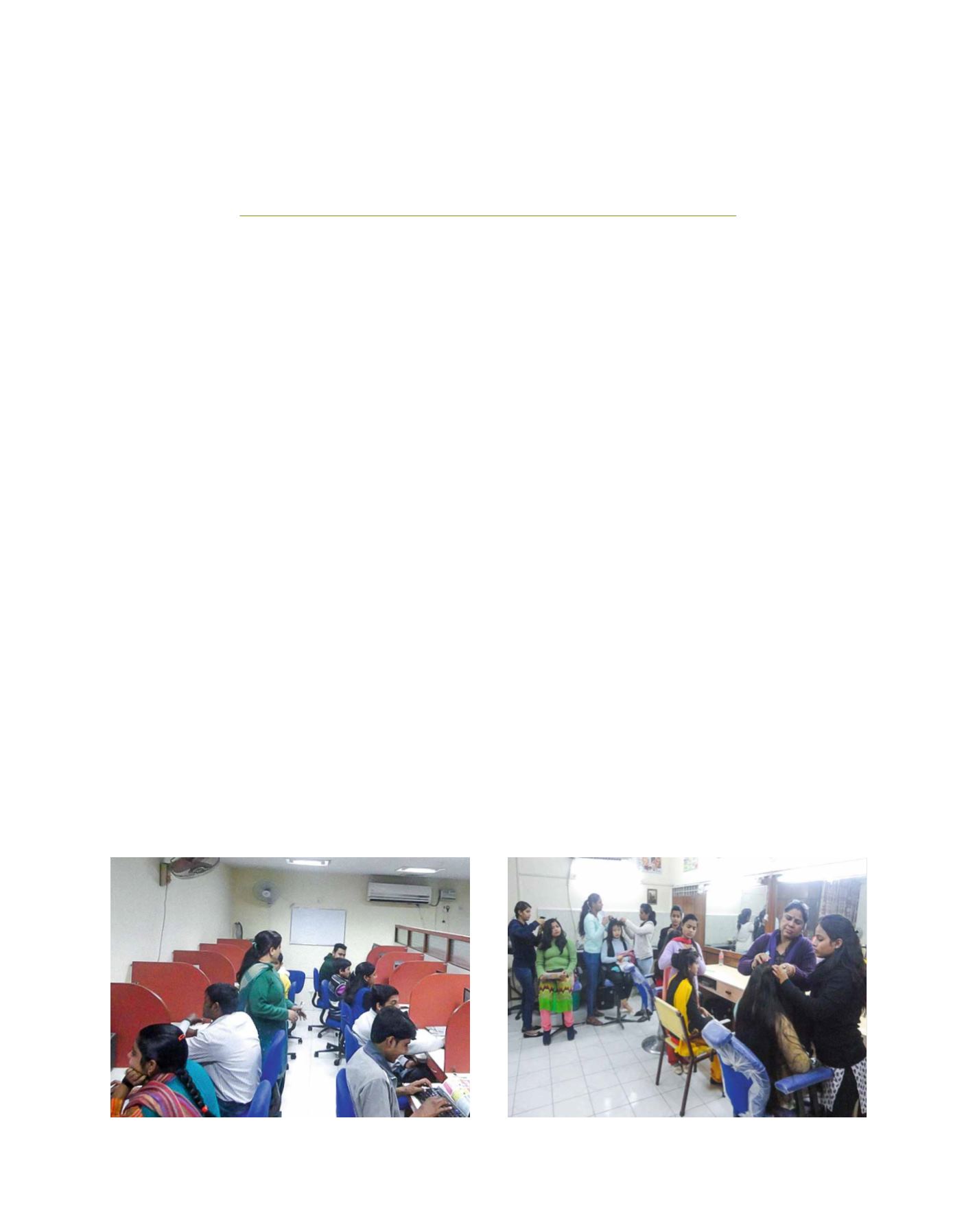

[
] 94
Championing women:
All India Women’s Conference
Mythily Jagannathan, author, presenter and All India Women’s Conference Member; and
Chandraprabha Pandey, writer, translator and All India Women’s Conference Member for Art and Culture
A
ll India Women’s Conference (AIWC) is one of
the premier women’s voluntary organizations in
India, involved in the field of women’s education
and empowerment for the last 85 years. Its founder was
Margaret Cousins, an Irish woman who urged her Indian
compatriots to take heed of the changing world and the
new socialist movements that were auguring change and
equality of the sexes in the West. She wanted the same
new consciousness to permeate the Indian social fabric.
Pioneering, well-educated Indian women rose to the challenge.
AIWC was registered under the Societies Registration Act in
1930. From inception, AIWC has been deeply concerned
about the economic, social and legal needs of women and
has played a major role in the enactment and modification
of laws pertaining to dowry, child marriage and more. The
organization has always adopted a participatory approach in
the implementation of its programmes, focusing on women’s
education, health (physical and mental), capacity-building,
income generation and so on through its network of branches.
What we know today as the 17 Sustainable Development
Goals (SDGs) were actually targeted back in 1928 by AIWC.
Here are some examples of AIWC’s outreach on selected SDGs.
SDG 4: literacy and education
Education is key to gender equality and the overall empower-
ment of women. It has been a major concern of AIWC, which
was founded to target the education of girls and women. The
literacy rate of women in 1927 was very low. AIWC made
strenuous efforts to address different groups of girls and
women and adopted its education programmes to include
everyone so that ‘no one was left behind’.
Through its more than 520 branches, AIWC tried to make
education inclusive and address the needs of Indian women
in remote rural areas. Schools from primary class to 10+2
(equivalent to the International Baccalaureate and General
Certificate of Secondary Education levels in the west) benefit
countless students.
Some specially designed programmes are:
• Skill-based literacy programmes for women in remote
areas, slums etc
• Computer training centres and vocational courses run by
AIWC branches
• The AIWC Vocational Institute, affiliated with the
National Institute of Open Schooling, providing certificate
courses in computer science, beauty culture, textile block
printing, cutting and tailoring and Ayurveda for income-
generation and employability
• A three-month programme, ‘Home Health Care
Attendants’, for elderly persons in collaboration with the
Indian Red Cross Society.
SDG 5: gender equality
Gender equality is known as the stand-alone goal as it is dedi-
cated to the elimination of poverty, inequality, injustice and all
forms of violence against women and girls. Stark gender disparity
A computer class at the AIWC Vocational Institute
Students training in beauty culture at the AIWC Vocational Institute
Image: AIWC
Image: AIWC
A B
etter
W
orld
















